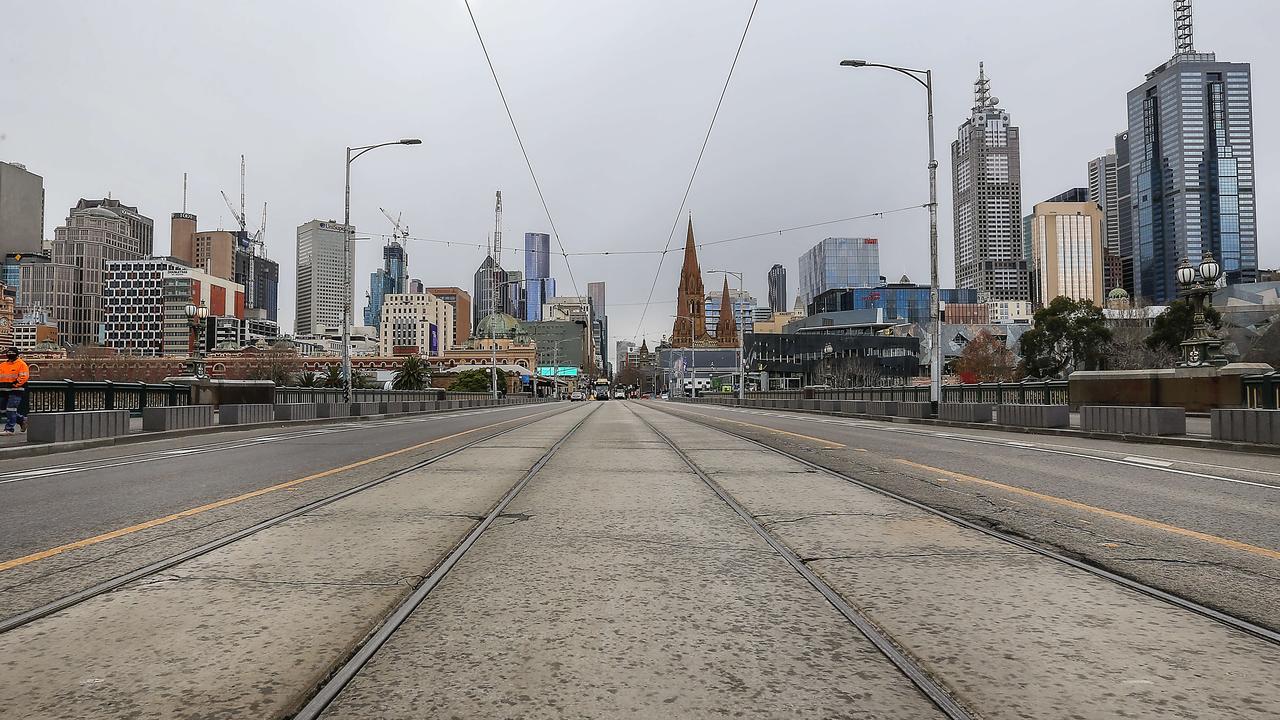PM Scott Morrison’s biggest challenge comes from Reserve Bank head Philip Lowe
Straight-talking Reserve Bank chief Philip Lowe is bluntly telling the Government that it can no longer leave it up to the bank to set the economy’s direction, writes Shaun Carney.
Opinion
Don't miss out on the headlines from Opinion. Followed categories will be added to My News.
Scott Morrison and Josh Frydenberg are being trolled by a middle-aged nerd. Having secured one of the Liberal Party’s greatest electoral victories only a few weeks ago, you would think they might be able to survey the Canberra landscape without coming across anything much that challenges their supremacy.
The Senate crossbench? Easily “persuaded” with a few painless trade-offs here and there. The Labor Party? A confused, toothless shambles. The big departments? Years of appointing the right people in the right positions has made them pretty tame. They do what they’re told.

But there’s this guy, a pale-skinned, greying carrot-top who wears glasses and keeps poking and prodding the Government on its economic performance, suggesting — no, asserting — that there are other, better ways to run the country. And, having pulled off an electoral miracle, could they just please get on with making a few bold choices?
His name is Philip Lowe and he’s paid around a million dollars a year to be the governor of the Reserve Bank. And although he’s government-appointed he’s completely independent of government, so he can’t be brought into line in the usual ways.
Since taking the post in late 2016, Lowe has become an active commentator on where economic policy is working and where it’s falling short. Naturally, it’s the “falling short” part of what he says that attracts most attention. As it should, because it’s getting harder to introduce new ideas and perspectives to national politics.
Essentially, Lowe — whose task, along with the Reserve Bank board, is to set interest rates — thinks things are going OK but could and should be better. He’s a straight-talker. Not for him, the usual “riddle me this!” form of speaking so common in Canberra, although he does like to dull the sharper edges of what he’s saying by often referring to “governments around the world” rather than the one government he can influence.
Lately, as interest rates have been going down, he’s been pushing the Government on the advantages of borrowing to pay for more infrastructure.
And he made it plain that the Government should do it now — or at least be ready to.
Last week he took his message further: there is spare capacity in the economy that needs to be reduced through more stimulus, spending and “structural reform”.

Lowe in the past has also bemoaned the effect of stagnant wage growth on the community. “Flat real wages are diminishing our sense of shared prosperity. The lack of real wage growth is one of the reasons why some in our community question whether they are benefiting from our economic success.”
None of these interventions would have been welcomed by the Government. Its essential message to the public, sold effectively at the election, is that when it comes to running the economy, it’s got everything right.
What Lowe says is news. What’s not noted is why he’s become an independent policy advocate, challenging the orthodoxy.
Some of it is to do with Lowe’s personality and his energetic approach to his job, as well as the fact that interest rates — now the lowest they’ve been in Australia since 1901 — are just about tapped out as a powerful economic tool. Part of his message is that the Government can no longer leave it up to the Reserve Bank to set the economy’s direction by making it hotter or cooler.

But it also reflects how risk-averse and unimaginative modern governing has become. The Morrison Government does have an infrastructure program. But it’s mostly small-bore stuff, politically designed, and aimed at helping it electorally rather than part of a larger nation-building narrative. Predictably, Lowe has a view on that: he says infrastructure planning shouldn’t be left with politicians because that erodes voters’ trust in the system.
Governing today, especially under this Government, which was re-elected on a platform of doing nothing bold, is expressly not about doing anything ambitious.
We no longer have a policymaking process that reaches right down into communities.
MORE: OPINION
Politicians in the major parties — the ones who have a chance of forming governments — can’t really look to rank and file members for substantial policy development because the parties are so denuded of members that they often come across as fringe organisations.
Where are the debates on the big questions and how do they get started in the contemporary environment? After the 2019 election, risk aversion is the model to follow. On economic policy, we should be thankful we have our mild-mannered chief banker there to call out the Government’s fashion choices.
Shaun Carney is a Herald Sun columnist


